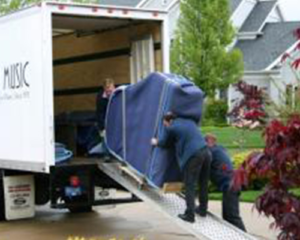Dogs learn best when we focus on rewarding what they do, not punishing what they don’t do. This is why balanced trainers use positive reinforcement rather than compulsion. Read on California Dog Training for more information.

For example, if your dog jumps on grandma when she comes to visit, you should correct the jumping behavior and then reward her for not doing it (assuming the jumping is in response to her greeting). This is called classical counterconditioning.
Positive reinforcement is a training method that uses rewarding your pet for behaviors you want her to do. This type of dog training teaches your pet how to behave and helps you build trusting relationships together. It also promotes safe and non-aversive training methods, which are better for the physical and emotional health of your pet.
In order for positive reinforcement to work, you have to provide something your dog really likes to receive as a reward. Most commonly, this is food, but it can be toys, attention, a belly rub, or even access to the yard or a walk. You have to be very consistent and prompt with your rewards so that your dog is able to learn how to respond to her environment and to other people quickly and without being distracted by other things around her.
Providing high-value rewards is the most important part of positive reinforcement. You can start with small treats or clickers, and then progress to a more exciting reward, such as running off-leash for a few minutes. This is especially helpful when you are trying to train your dog a new behavior that she has not yet mastered, such as walking on a leash for the first time in a public space.
One of the reasons that some pet owners choose to use negative methods of training is that they are not comfortable with the idea of a dog receiving positive reward for behaviors they consider inappropriate. This is a real shame, as modern behavioral and cognitive science has proven that positively reinforced behaviors are far more effective than using punishment.
Unfortunately, some trainers who do not use positive reinforcement as their primary training method often refuse to help their clients with other behavior issues or will aggressively attack them if they seek alternative methods of training. This is a huge concern, as this can lead to psychological and physical harm for pets that are in need of help and care.
To combat this issue, veterinarians can play an important role by educating pet parents on the benefits of positive reinforcement training and encouraging them to seek out a positive reinforcement-based trainer for their pets. This will ultimately reduce the incidence of unwanted behavior that leads to relinquishment and euthanasia, which is in the best interest of the animal, as well as the human-animal bond.
Negative Reinforcement
The counterpart to positive reinforcement is negative punishment – taking away an aversive for undesired behavior. This can take many forms but is most often done by removing something the dog likes: attention, an expected treat, freedom in space (time-outs), etc. For example, if your pup barks when you look at them, start shaking a can partially filled with coins until they stop barking, and then remove the unpleasant stimulus. The dog will soon learn that not barking gets you to turn around and give them your attention again.
Using this method requires the use of a clicker to mark the exact moment your pet completes the desired behavior, right before you deliver the reward. If you aren’t familiar with the use of a clicker, it’s best to work with a professional who is – they’ll help you get training off the ground and your dog trained quickly and effectively.
In order to use negative reinforcement, it’s important to understand the concept of reinforcement and how dogs learn. All living things repeat behaviors that are rewarding or reinforcing, and behaviors that don’t receive any reward are extinguished. Therefore, all unwanted behaviors must be punished if they are to be eliminated from the dog’s repertoire. Punishment may be physical or verbal and should never be harsh or cause fear or aggression in the dog.
Some examples of negative punishment include hitting and yelling at the dog, physically pushing them to the floor when they jump up or aversive noises from an e-collar. All of these methods can lead to high levels of stress and anxiety in the dog, including increased cortisol, and may also elicit aggression towards family members or strangers.
However, some professional trainers still rely on negative punishment in their practice, and it’s not difficult to see why. Many owners and pets aren’t ready for non-confrontational training methods, and it’s easy to be persuaded by the promise of a quick and easy solution to a problem behavior. In reality, however, a well-trained dog can be accomplished without the use of force and will likely be much easier for everyone involved in the process.
Punishment
Punishment involves taking away something a dog wants or needs to stop an unwanted behavior. It can be as simple as yelling at your dog, tapping them with a newspaper, spraying citronella or water on their face, using a leash jerk or alpha roll, hitting the dog or even using a shock collar. Punishment can be effective if done correctly but it is easy to make mistakes that will lead to negative fallout for the dog.
One of the biggest mistakes with punishment is lack of follow through. Whether it is the trainer who does not follow through with the training or the owner that does not do their homework, failure to apply punishment correctly will lead to a lack of success. Consistency, timing and intensity are the three elements of successful punishment. Inconsistency will ensure the dog does not understand what they are being punished for, timing will ensure it is administered within a second of the inappropriate behavior and intensity must be high enough to stop the behavior but not so high that it causes pain.
Many people use punishment because they have seen short-term results but over time it leads to escape, apathy and even aggression in the dogs. It also fails to address the underlying cause of the unwanted behavior which may be due to a health issue that needs veterinary attention.
Punishment techniques are often used by untrained owners and can be very dangerous to the animal. They may also lead to frustration, apathy or overstimulation that leads to the dog having a negative emotional experience and can escalate into aggression.
Punishment should only be used when a complete penalty-change-reward cycle is applied. If you punish your dog for jumping up on people you must follow this with showing them how to interact positively. Punishment without teaching the dog a better alternative will only teach them to hide, avert their eyes, or lower their tail which are all signs of fear and stress. If you are a dog owner that is struggling with aggressive behavior, seek the help of an experienced trainer who will teach you to use positive reinforcement instead.
Rewards
Using rewards is the best way to train a dog. It helps them understand what they are getting for doing something right and gives them a reason to keep doing it. Rewards can be anything from treats to verbal praise, playing, cuddling, or going on walks.
During the early stages of training, it is important to reward every time your dog responds to the command. This will help them learn that your word means what you want it to mean.
After your dog has gotten a new behavior down, you can start to decrease the number of times they receive a treat. This will allow them to practice the behavior in different environments and situations without having to worry about not getting their treat.
Some trainers use a grading system for rewards. For example, if your dog does a good job with their Stay, they will earn a higher level of reward (such as a jackpot) after a certain number of repetitions. This will encourage them to work towards that higher reward and will make their performance even more impressive.
Another technique is to use intermittent rewards. This is when you will only give your dog a treat if they are solid on the behavior in a given time frame. This will keep your dog engaged in the training and also ensure that they will listen to you at all times, not just when it is rewarding time.
Life rewards are another great way to reinforce your dogs behaviour. These can be things like letting them run off lead, giving them access to their favorite toy or a belly rub. The trick is to get them really excited about the reward so that they are happy to do what you ask.
If you can start to incorporate these types of rewards into your training, it will jumpstart the process of fading out food treats and will strengthen your bond with your dog. Just remember that the goal is to get your dog doing what you ask, not because they are afraid of a punishment if they do not comply, but because they love you and want to please you.


